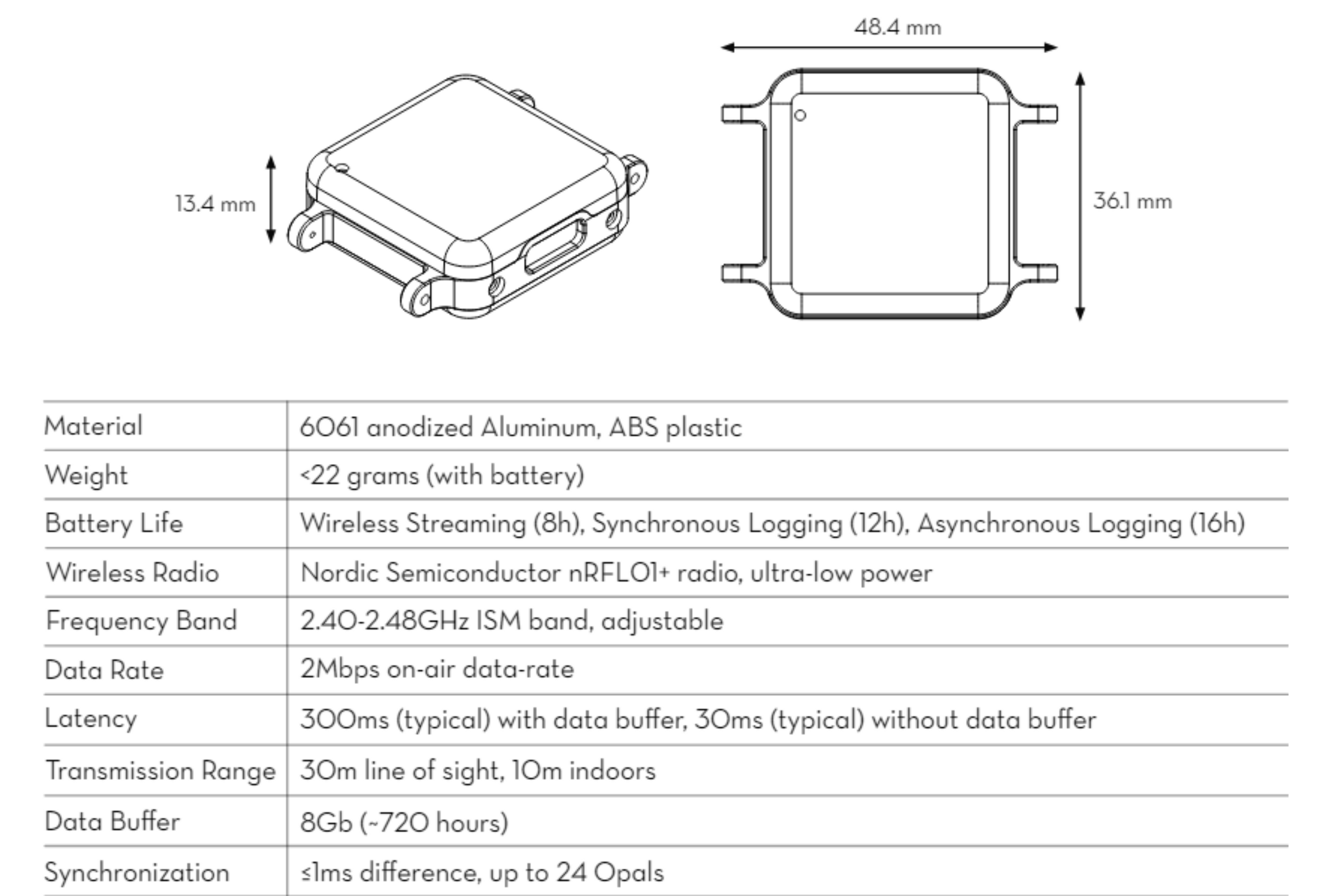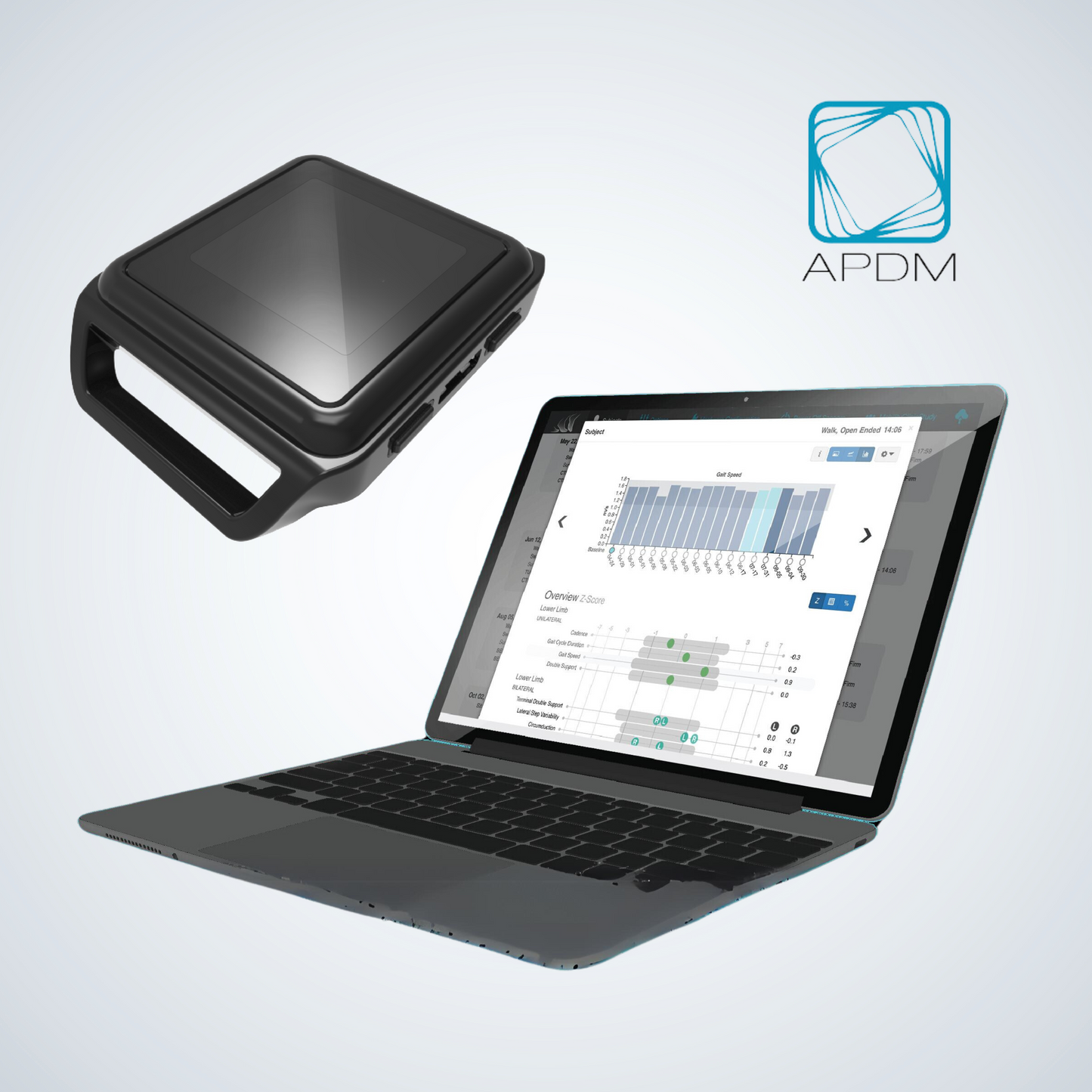
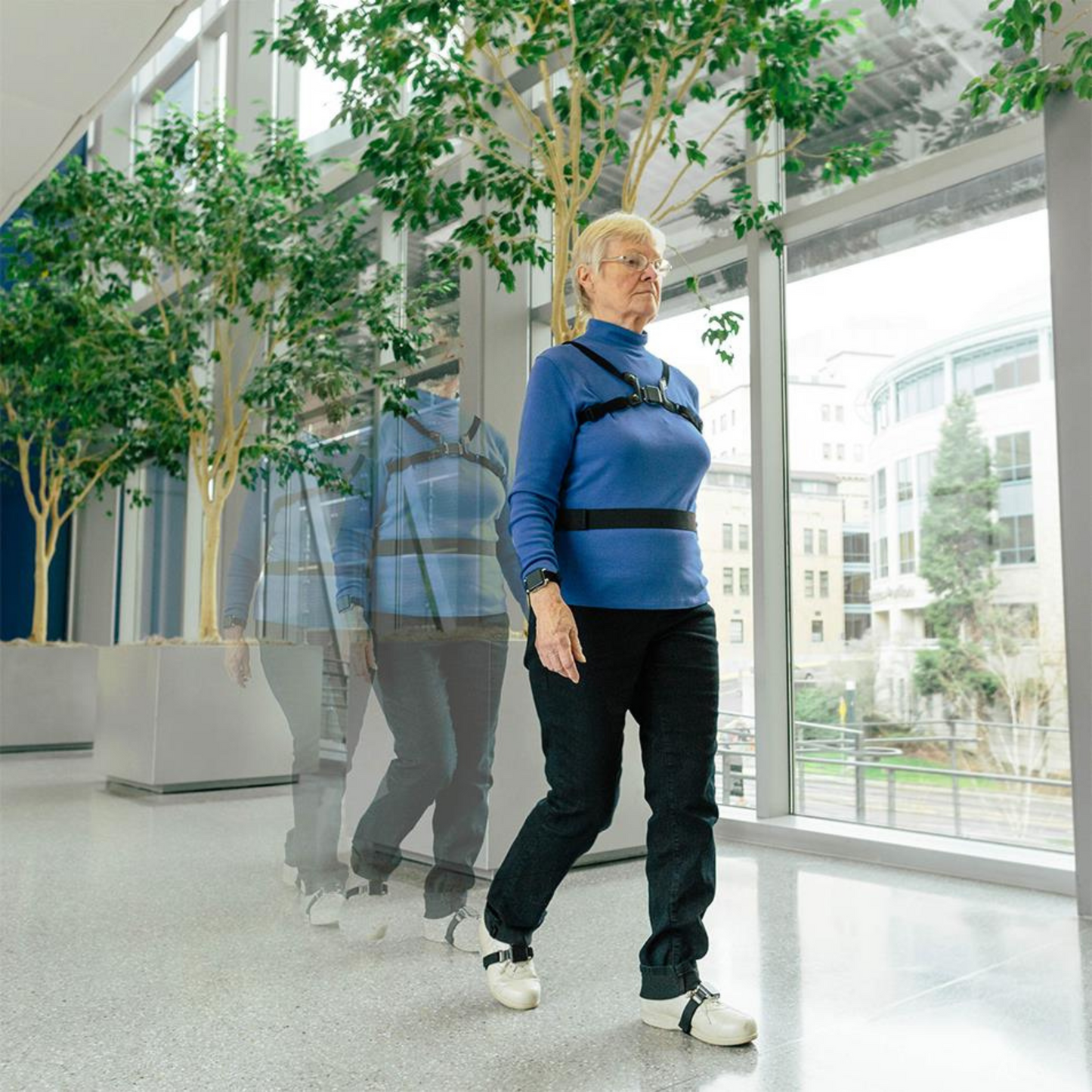
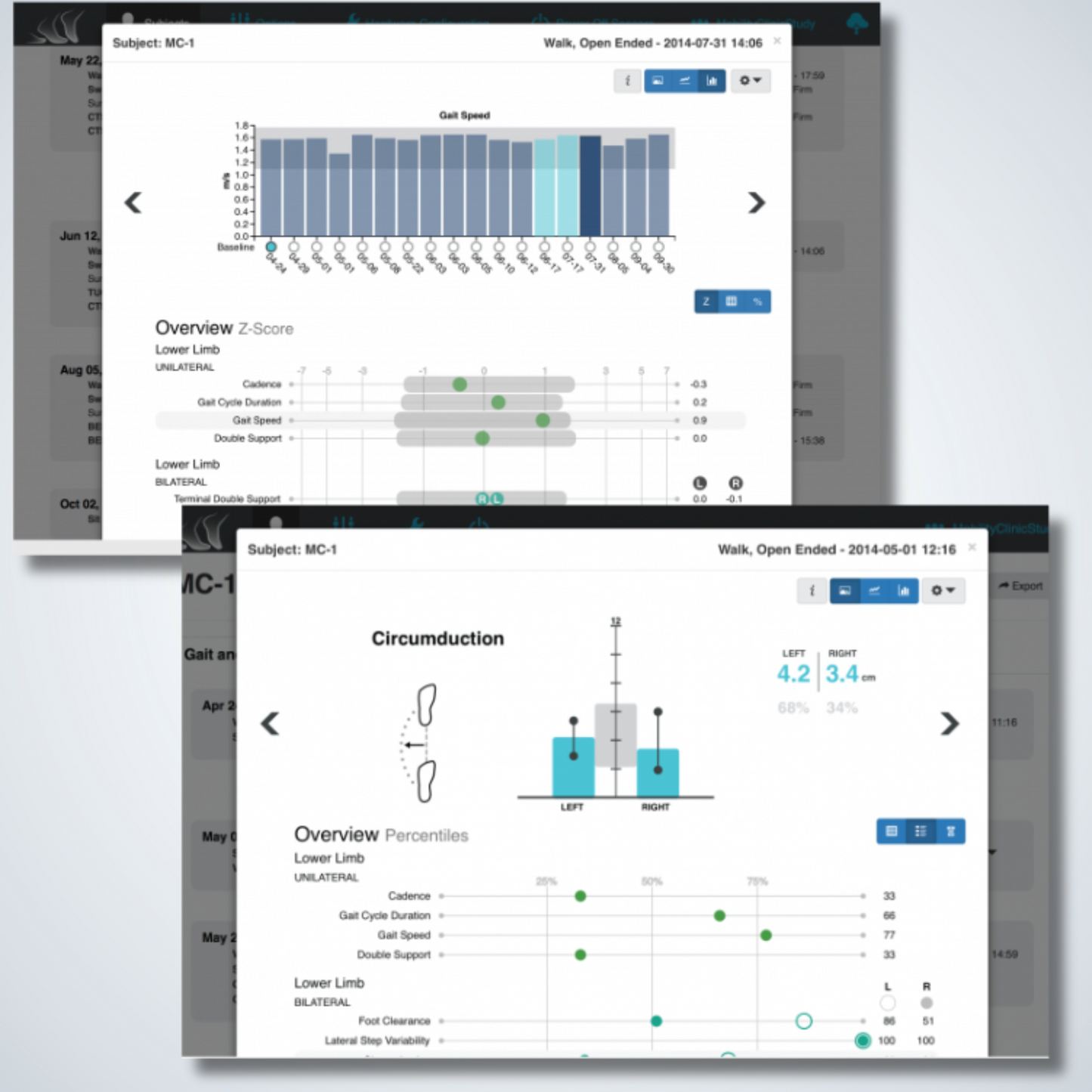
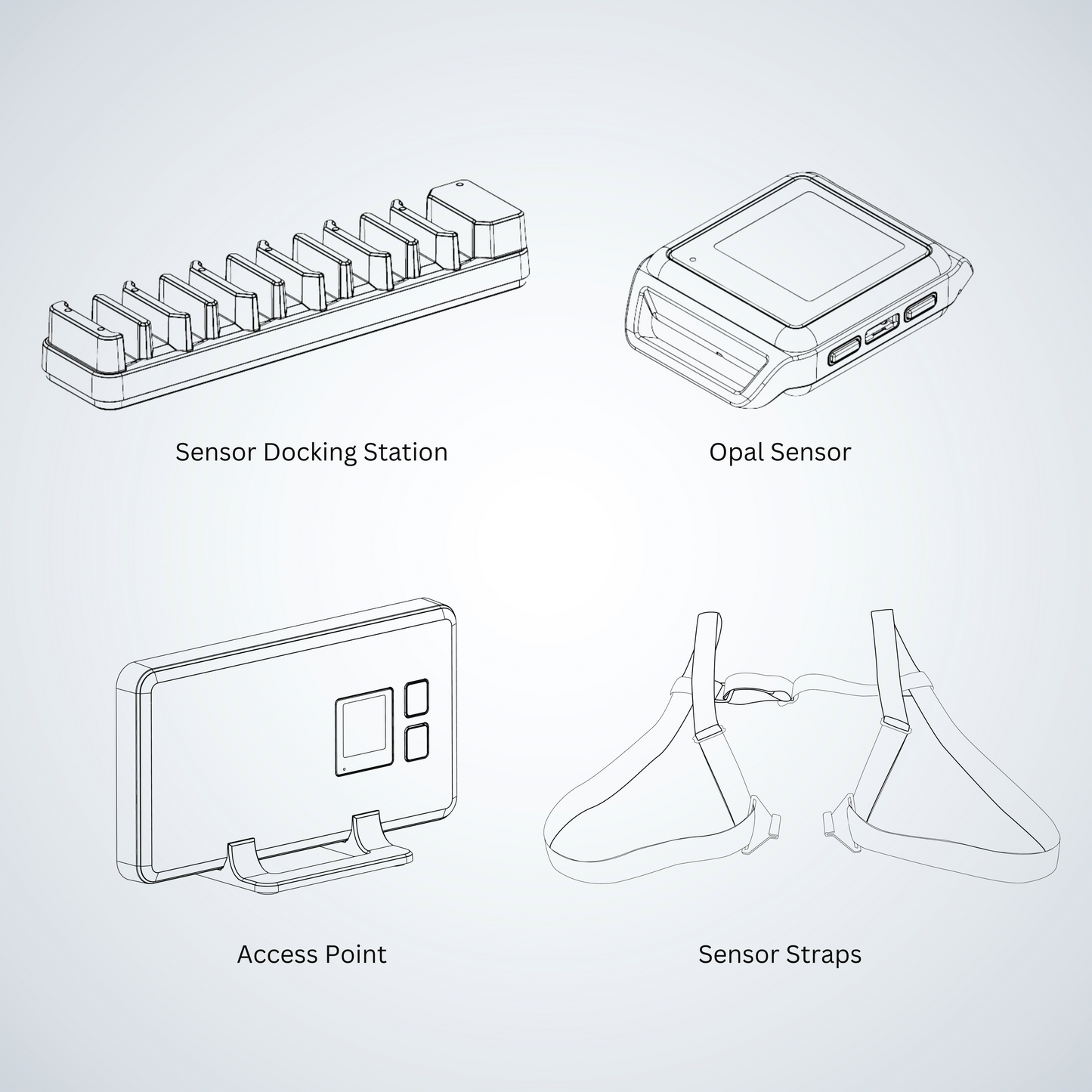
Mobility Lab
Mobility Lab provides sensitive, reliable and valid outcome measure for assessing functional mobility anywhere.
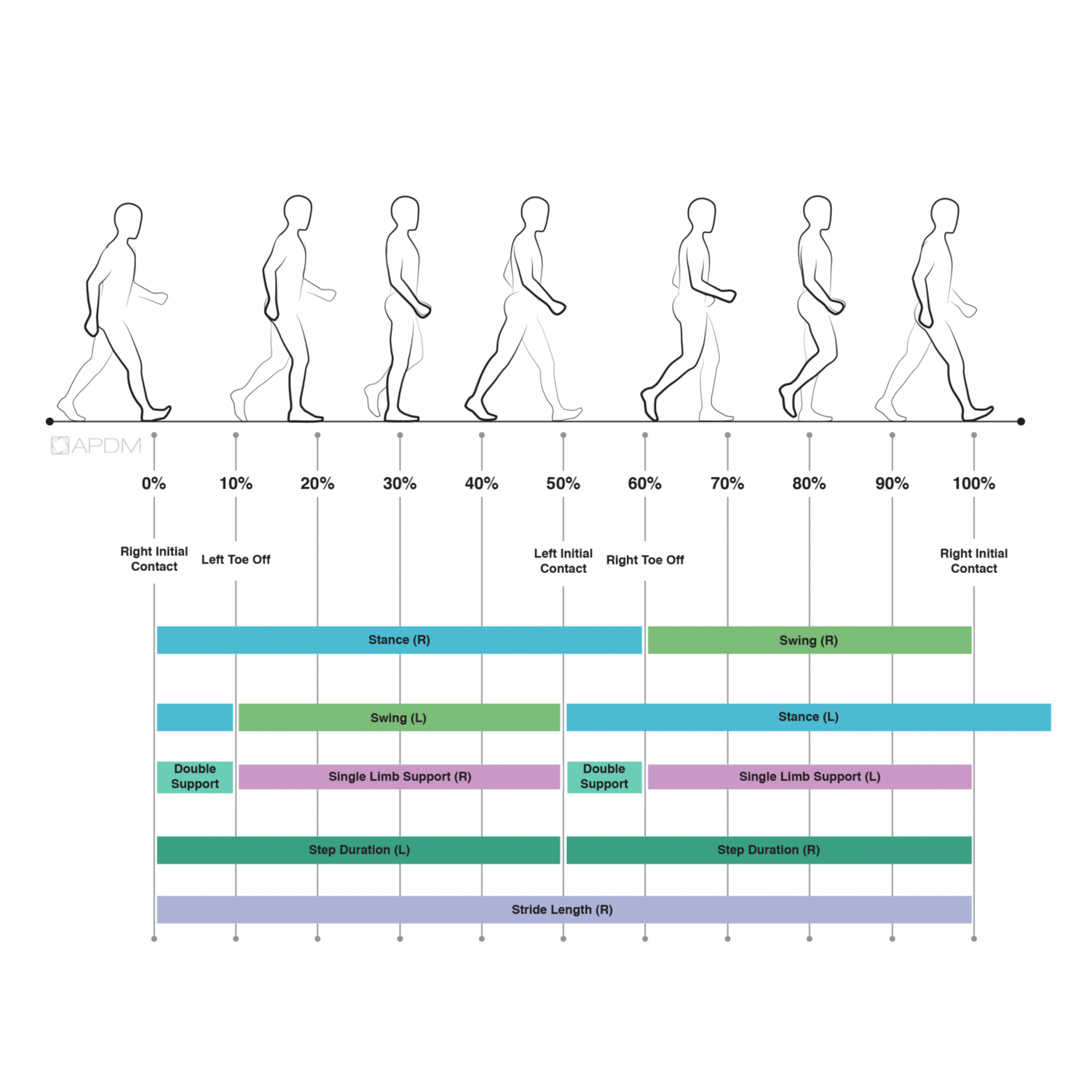
Full Body GAIT Analysis
The APDM sensor is a sophisticated device that offers a wide range of measurements for both lower limb and upper limb movements. For the lower limb, it can measure cadence, elevation at midswing, gait cycle duration, gait speed, double support, terminal double support, lateral step variability, circumduction, dorsiflexion, plantarflexion, stance, step duration, stride length, swing, toe-out angle, and stride length variability.
On the other hand, for the upper limb, the sensor can capture arm swing velocity and arm range of motion. Additionally, it can measure anticipatory postural adjustment (APA) parameters such as APA duration, first step duration, first step range of motion, sagittal APA peak, and coronal APA peak.
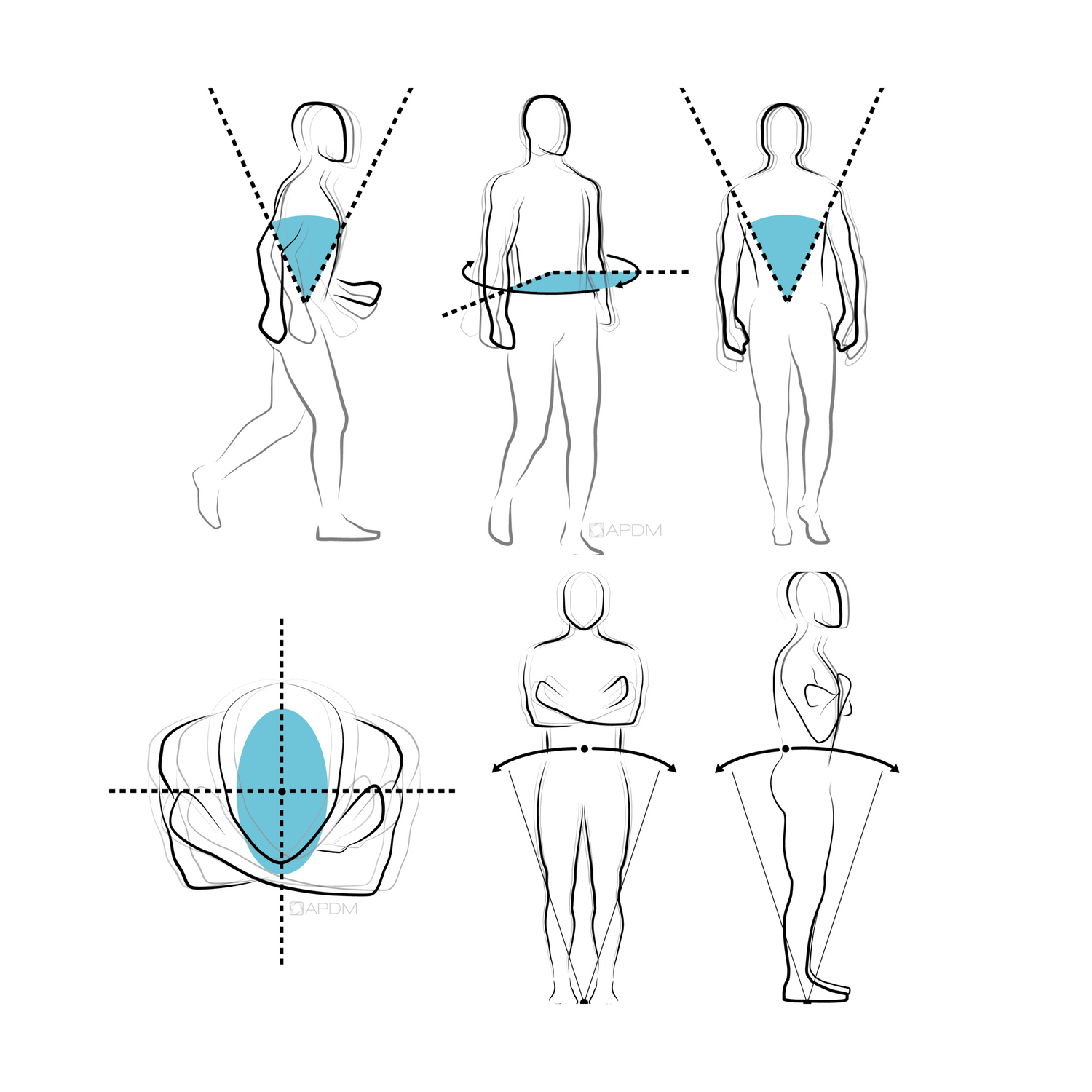
Balance
The APDM sensor offers a comprehensive suite of measurements to assess balance, including trunk and lumbar range of motion (coronal, sagittal, and transverse), turning (angle, duration, turn velocity, steps in turn), sit-to-stand (lean angle, duration), and stand-to-sit (lean angle, duration). These measurements provide valuable insights into movement patterns critical for understanding and improving balance control, facilitating the development of targeted interventions to reduce the risk of falls and improve balance in individuals with movement disorders.
Moveo Explorer
Through automated kinematic analysis, Moveo Explorer acts as a portable motion capture lab providing joint angle data, in addition to gait and balance analysis.
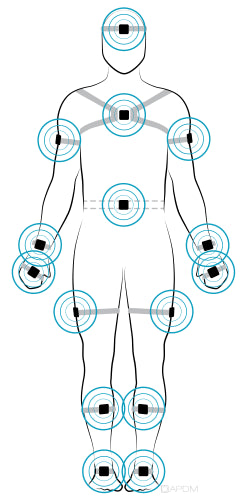
Full-Body Kinematics
APDM enables full-body kinematic measurement, capturing a wide range of movements across the body. This includes neck flexion-extension, lateral bending, and rotation; back flexion-extension, lateral bending, and rotation; shoulder flexion-extension, abduction-adduction, and internal-external rotation; elbow flexion-extension and supination-pronation; wrist flexion-extension and ulnar-radial deviation; hip flexion-extension, abduction-adduction, and internal-external rotation; knee flexion-extension, varus-valgus, and internal-external rotation; and ankle dorsiflexion-plantarflexion, inversion-eversion, and abduction-adduction.
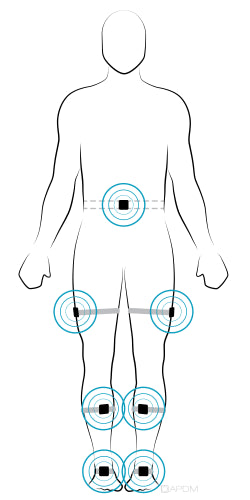
Lower Limb Kinematics
APDM provides comprehensive lower-limb kinematic measurement, capturing movements in the lumbar region including flexion-extension, lateral bending, and left-right rotation; hip movements such as flexion-extension, abduction-adduction, and internal-external rotation; knee flexion-extension, varus-valgus, and internal-external rotation; and ankle dorsiflexion-plantarflexion, inversion-eversion, and abduction-adduction.
Motion Studio
Motion Studio allow user to record and export raw data of the motion sensors.
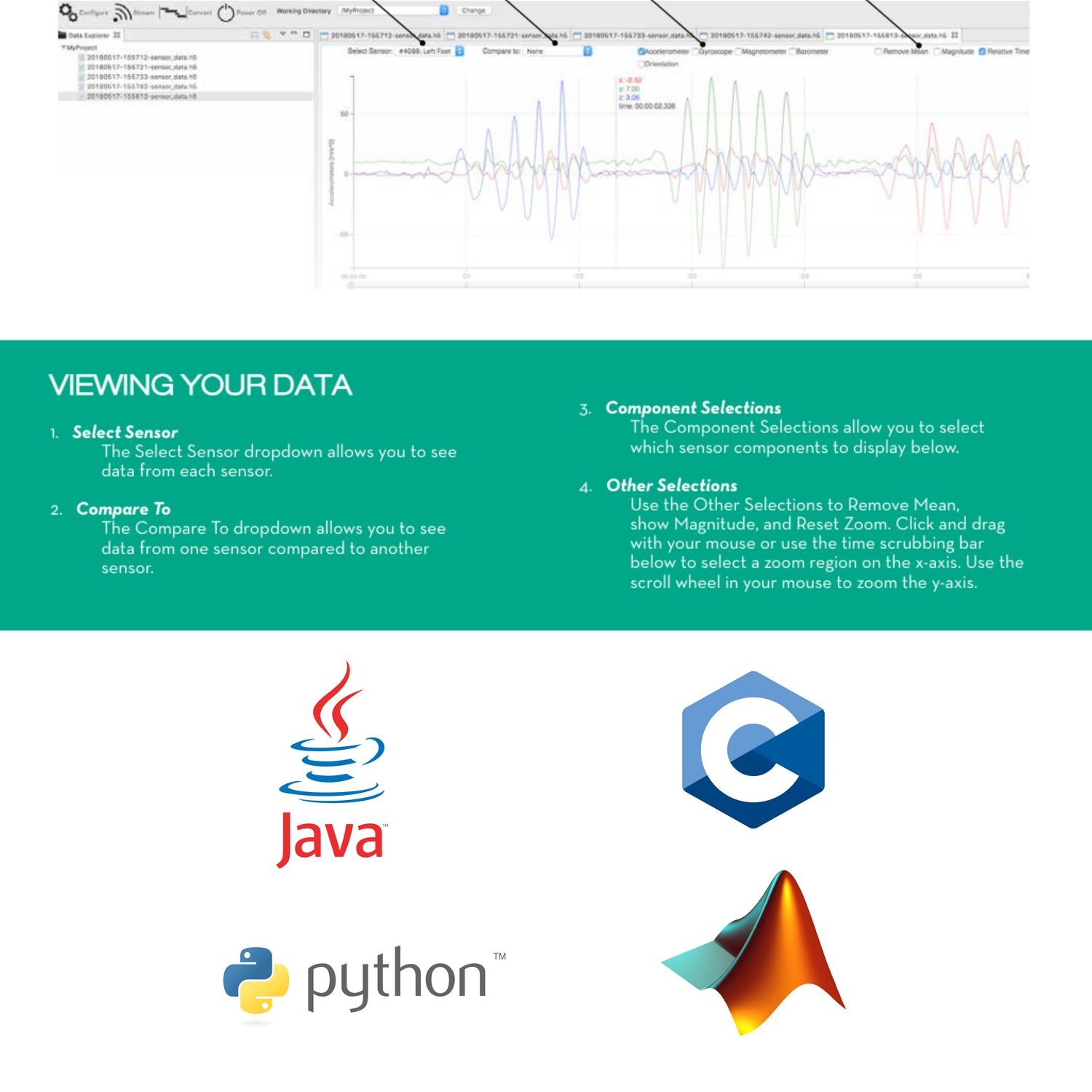
Row
The APDM sensor offers high sampling and syncs with MATLAB, Java, Python, and C. It provides raw kinematic data, streams or logs data, and lasts 8hr-4d on a charge. With up to 24 Opals on one network.
Sensor Specification
